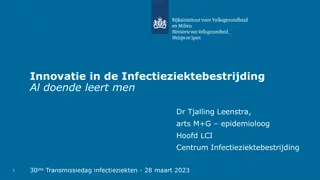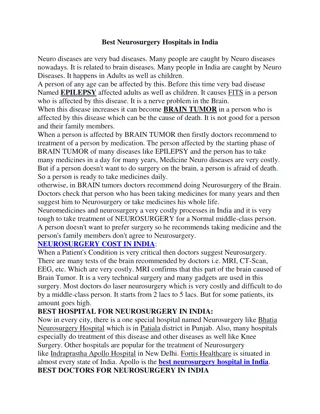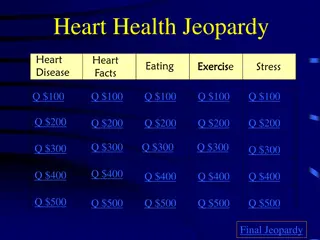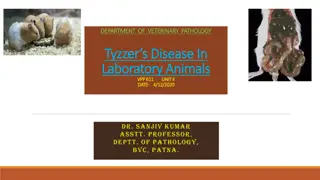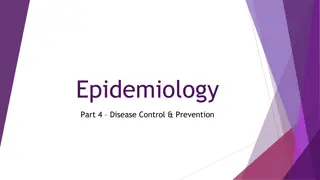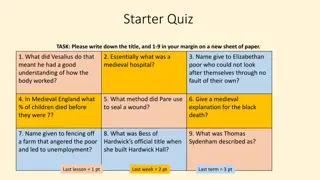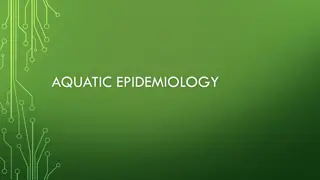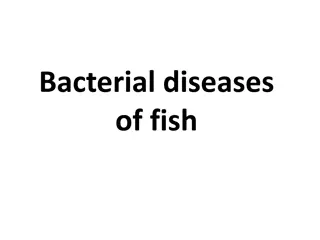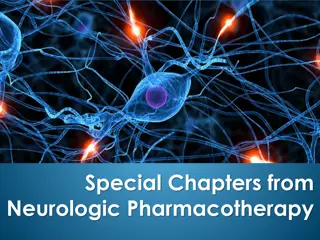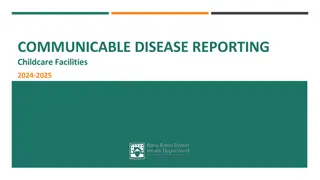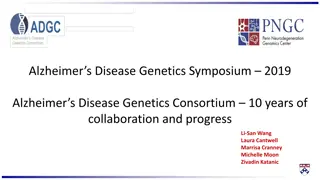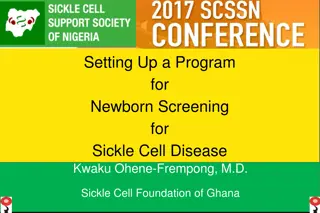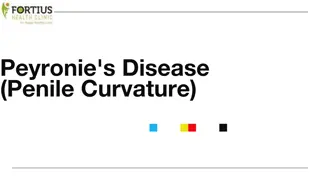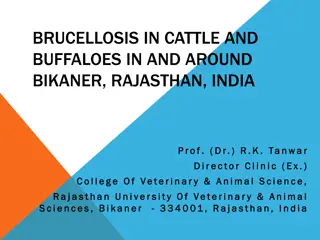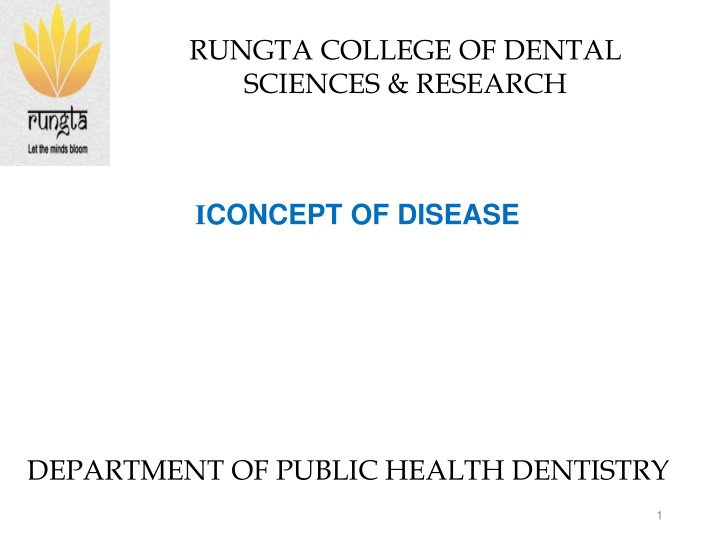
Disease Concepts in Public Health Dentistry
Explore the concepts of disease, causation, agent factors, host factors, and environmental factors in the context of public health dentistry. Learn about disease control, prevention strategies, and modes of intervention to maintain oral health.
Download Presentation

Please find below an Image/Link to download the presentation.
The content on the website is provided AS IS for your information and personal use only. It may not be sold, licensed, or shared on other websites without obtaining consent from the author. If you encounter any issues during the download, it is possible that the publisher has removed the file from their server.
You are allowed to download the files provided on this website for personal or commercial use, subject to the condition that they are used lawfully. All files are the property of their respective owners.
The content on the website is provided AS IS for your information and personal use only. It may not be sold, licensed, or shared on other websites without obtaining consent from the author.
E N D
Presentation Transcript
RUNGTA COLLEGE OF DENTAL SCIENCES & RESEARCH ICONCEPT OF DISEASE DEPARTMENT OF PUBLIC HEALTH DENTISTRY 1
Learning Objective--- At the end of the Class the student should be able to- Sr.no Learning objectives Domain Level Criteria condition Describe concept Of Disease 1. cognitive Must know ALL Describe concept Of Causation 2. cognitive Must know ALL Enumerate Agent, Host, environmental Factors 3. cognitive Must know ALL Describe concept Of Control & Prevention 4. cognitive Must know ALL Enumerate modes Of Intervention 5. cognitive Must know ALL
CONTENTS CONTENTS Concept Of Disease Concept Of Causation Agent Factors Host Factors Environmental Factors Risk Factors Concept Of Control Concept Of Prevention Modes Of Intervention
CONCEPT OF DISEASE CONCEPT OF DISEASE Defined as; condition in which body health is impaired, a departure from a state of health, an alteration of the human body interrupting the performance of vital functions
CONCEPT OF CAUSATION Germ theory of disease The emphasis had shifted from empirical causes eg:- bad air Epidemiological triad Consists of ENVIRONMENT, AGENT & HOST. Multifactorial causation (Pettenkofer,Munich) Diseases such as coronary heart disease and cancer e.g., excess of fat intake, smoking, lack of physical exercise.
AGENT FACTORS AGENT FACTORS Defined as; Substance, living or non living, or a force, tangible or intangible, the excessive presence or relative lack of which may initiate or perpetuate a disease process
Disease agents are classified as:- 1. Biological agents 2. Nutrient agents 3. Physical agents 4. Chemical agents 5. Mechanical agents 6. Absence /excess of a factor necessary to health 7. Social agents
HOST FACTORS (intrinsic) HOST FACTORS (intrinsic) Classified as; Demographic characteristics Biological characteristics Social & economic characteristics Lifestyle factors
ENVIRONMENTAL FACTORS (EXTRINSIC ENVIRONMENTAL FACTORS (EXTRINSIC) Defined as; all that which is external to the individual human host, living and non living & with which he is in constant interaction Divided into:- 1. Physical environment 2. Biological environment 3. Psychosocial environment
RISK FACTORS An attribute associated with development of a disease. A determinant that can be modified by intervention It reduces the possibility of occurrence of disease.
Prominent risk factors Prominent risk factors Heart disease Smoking, high BP, elevated serum cholesterol Smoking, alcohol, solar &ionizing radiations. Cancer Obesity, diet. Diabetes Alcohol. Cirrhosis of liver.
ICEBERG CONCEPT Symptomatic disease What the physician sees Pre-symptomatic disease What physician doesnot see
CONCEPTS OF CONTROL DISEASE CONTROL: aims at reducing; The incidence of disease The duration of disease The effects of infection The financial burden to the community
DISEASE ELIMINATION DISEASE ELIMINATION Describes as interruption of transmission of disease. Eg:- elimination of measles , polio and diphtheria .
DISEASE ERADICATION Termination of all transmission of infection. It is all or none phenomenon .
CONCEPTS OF PREVENTION CONCEPTS OF PREVENTION Objective of preventive medicine; To intercept cause & thereby the disease process . LEVELS OF PREVENTION 1. Primordial prevention 2. Primary prevention 3. Secondary prevention 4. Tertiary prevention
Primordial Prevention Prevention of the emergence or development of risk factors in countries or population groups in which they have not yet appeared Primary Prevention Action taken prior to the onset of disease, which removes the possibility that a disease will ever occur
Secondary Prevention Action which halts the progress of a disease At its incipient stage and prevents complication. Tertiary Prevention reduce or limit impairments & disabilities minimize suffering Promote patients adjustment to irremediable conditions.
MODES OF INTERVENTION Defined as; Any attempt to intervene or interrupt the usual sequence in the development of disease in man Five modes of intervention 1. 2. 3. 4. 5. Health promotion Specific protection Early diagnosis and treatment Disability limitation Rehabilitation
HEALTH PROMOTION Process of enabling people to increase control over & to improve health Interventions are:- Health education Environmental modifications Nutritional interventions Lifestyle and behavioral changes
SPECIFIC PROTECTION Intervention aims at; Immunization Use of specific nutrients Chemoprophylaxis Protection against occupational hazard Protection against accidents Protection from carcinogen
EARLY DIAGNOSIS AND TREATMENT Defined as; detection of disturbances of homoeostatic and compensatory mechanism morphological & functional reversible. important in reducing; high morbidity & mortality in certain diseases Eg:-hypertension , breast cancer. while biochemical changes , are still
DISABILITY LIMITATION Objective; To prevent or halt the transition of the disease Sequence leading to disability; 1. 2. 3. IMPAIRMENT DISABILITY HANDICAP
IMPAIRMENT Any loss or abnormality of psychological, physiological or anatomical structure or function DISABILITY Any restriction or lack of ability to perform an activity in the manner or within the range considered normal for a human being HANDICAP Disadvantage for a given, that limits or prevents the fulfillment of a role that is normal for that individual
REHABILITATION Defined as; Combined & coordinated use of medical, social, educational & vocational measures for training & retraining the individual to the highest possible level of functional ability 1. 2. 3. 4. MEDICAL REHABILITATION VOCATIONAL REHABILITATION SOCIAL REHABILITATION PSYCHOLOGICAL REHABILITATION
SUMMARY Disease concepts - represent relations among causes Changes in disease concepts occurred About causes of disease.
EXPECTED QUESTION Describe concept Of Control & Prevention (LAQ) Classifydisease agents(SAQ) Enumerate Agent, Host, environmental Factors (SAQ)
Bibliography Bibliography Text book of Preventive & Social Medicine, by Gupta & Mahajan, 3rd Edition,Japee Publishers . PARK S Textbook of Prfeventive and Social Medicine ,by K. Park,17th Edition,Banarasidas Bhanot Publishers. Textbook of Preventive and Community Dentistry,1st Edition, by S.S. Hiremath,Elsevier Publications, , Chpt.1,pg no.3-18

